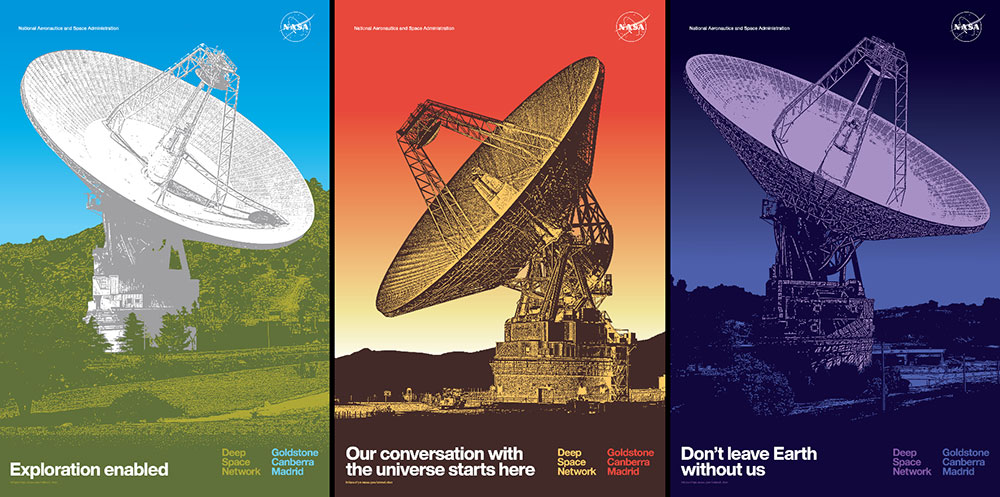
If you’re traveling far away, you don’t want to keep calling home to find out where you are.
Constellations spoke with Thomas Gardner, Director of Engineering/Mission Systems at Advanced Space of Colorado, about some of the new navigation and cislunar technologies it will be demonstrating on the upcoming Artemis 1 mission.
The launch of Artemis 1 is the first step in NASA’s program to put humans back on the surface of the Moon before moving onto Mars in the next decade.
But with a whole host of missions going to planets across the solar system, that is creating a challenge or bottleneck on the ground to support them. Gardner said there are already “half a dozen or so at Mars, one at Jupiter, and a number of missions like Artemis that will have multiple CubeSats operating in cislunar space.” And all of them will require communications services, basically at the same time.
Overbooked
Such missions that travel outside of geostationary orbit rely primarily on NASA’s Deep Space Network for tracking, navigation and other functions. But with a limited number of dishes and resources, communications with the Deep Space Network are “oversubscribed,” Gardner said.
That will place the burden on the Deep Space Network to “do that dance and figure out which ones are the priority,” he said, referring to the complex planning to support communications passes, which could constrain future missions.
 Three posters featuring the 70-meter (230-foot) antennas located at the three Deep Space Network complexes around the world. Credit: NASA/JPL-Caltech
Three posters featuring the 70-meter (230-foot) antennas located at the three Deep Space Network complexes around the world. Credit: NASA/JPL-Caltech
No Need to Phone Home
As an alternative approach, one not reliant on the ground, Gardner presented the Cislunar Autonomous Positioning System Technology and Navigation Experiment, or CAPSTONE, which will be aboard Artemis 1.
Gardner described the Cislunar Autonomous Positioning System as a software system for doing absolute position and velocity estimation in orbit, without the standard deep space tracking and on-the-ground navigation for a spacecraft.
Typically, tracking and estimating precisely where a spacecraft is, and where it is going, is calculated from the time it takes a signal to travel from Earth to the spacecraft and back. In the new approach, the two-way communication is done with another spacecraft in the same gravity field to accomplish the same thing.

“By doing a radio signal between the two spacecraft, we'll be able to estimate the position and velocity without using radiometric tracking from the ground to support that activity,” said Gardner. In this case, the communication will be with the Lunar Reconnaissance Orbiter (LRO), which has been in lunar orbit for 12 years.
The other part of the CAPSTONE mission, the Technology Navigation Experiment, will do additional navigation tests using a one-way ranging algorithm hosted onboard. “The signal will come up from the Earth, but instead of two-way ranging, we’ll just absorb that signal and do autonomous position using that alone,” said Gardner.
The intent of CAPSTONE is to evolve to more sophisticated navigation so that spacecraft can do “more autonomous operations, more autonomous navigation, and more autonomous communications in and around cislunar space,” Gardner said. That will alleviate dependence on the ground and resulting bottlenecks as more missions are planned to travel further from Earth.
NASA invests in innovation
As part of the Artemis program and NASA’s goal to spur commercial innovation, Advanced Space is being funded and hired to manage the mission. “We own the spacecraft, the operations, and the system,” Gartner said. “NASA is investing in us for the data and the results of the mission. They are an investor in the operation.”
That funding also comes with a tight budget. Gardner said that NASA typically spends hundreds of millions of dollars on a planetary mission of this sort, or even as low as $75 million, but that Advanced Space is doing the entire mission for under $30 million, “which by NASA standards is very low.”
Another First
Advanced Space will also be the first mission to demonstrate operations in “near rectilinear halo orbit” (NRHO), which is where NASA’s Lunar Gateway will be located in the future. NRHO is a unique orbit in that it balances the gravitational forces of the Earth and the Moon. Because it takes very little fuel to get in and out of this orbit and to maintain orbit, that makes it an ideal location for the Gateway to operate as a transfer station, and “to move back and forth between the surface of the Moon, back and forth between the Earth, and eventually onto Mars,” said Gardner.
Because NRHO has never been attempted before, Advanced Space will use a small 50-pound spacecraft as a prelude to the Gateway’s launch later in the decade.
Cislunar is the place to be
As for the tremendous uptick in cislunar activity, Gardner observed that in his 40 years in the space industry, “I've never seen so much interest in doing lunar missions, lunar operations, both commercially and from a scientific point of view.”
To hear more on why the cislunar environment is so attractive, from providing potentially exploitable materials on the Moon’s surface, to establishing a presence for deep space exploration, and the unique aspects of the orbital environment, click here for the full interview.
